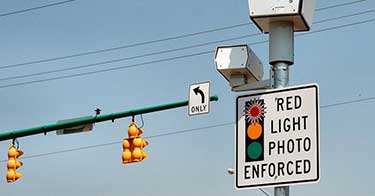Car crash rates down but deaths and injury rates unchanged – Vision Zero report to Ajax Council
Published October 22, 2021 at 2:11 pm

An update provided to Ajax town council shows Durham Region’s Vision Zero traffic safety program is reducing car accident rates, but the deaths and injuries they cause remain about the same.
The Vision Zero program, first developed in Sweden in 1997, is a traffic plan with the goal of reducing traffic fatalities and injuries to zero. Canadian municipalities began adopting the methodology in 2015, with cities such as Toronto, Vancouver and Ottawa getting onboard.
Durham Region created its current Vision Zero action plan in 2019. It aims to reduce fatal and injurious traffic collisions by 10 per cent by 2023. In order to accomplish the goal, the Region began to re-evaluate how roads and intersections are developed as well as modernizing enforcement and introducing new technologies, such as red-light and speed cameras.
Durham’s Traffic Engineering and Operations Manager Steven Kemp provided Ajax council with an update on the program at Monday’s council meeting. He noted a significant reduction in the amount of accidents, partially attributable to reduced traffic during the COVID-19 pandemic.
“One good aspect of out COVID experience is that our collision data is down substantially from previous years,” he told Ajax Council, “but we’re very cautious and reluctant to take credit necessarily for all of that.”
Kemp said traffic volume was down over 50 per cent during the pandemic. “That directly attributes to some of the reductions we’ve seen.”
“The real test will be to see what happens when traffic volumes start to creep back up like they’re already doing.”
However, he shared that fatalities and injuries in those accidents were about the same as previously. He said the stable rates are likely due to drivers being more likely to speed on more open roads.
“Our serious injury and fatal collisions seem to be on a bit of a different track. They haven’t gone up necessarily, but they’ve stayed pretty static,” Kemp said, “During the periods we saw the traffic volumes so low, we know that average speeds were way up.”
He also noted the Region was working with Durham Police to improve enforcement on regional roads. Part of this effort is the previously mentioned red light and speed camera programs.
The red light program has resulted in 2,283 charges issued against drivers. Kemp noted that the intersection with the most infractions was at Delany Drive and Westney Road in Ajax. While violations have also decreased, Kemp said due to the pandemic they can’t solely attribute the reduction to the program.
Kemp also shared the automated speed enforcement camera program have resulted in more than 50,000 tickets across the region and Kemp praised the success of the program.
“I”ve been trying for 25 yeas as an engineer to find way to get people to slow down,” he said. “We’ve tried everything and frankly, nothing has really worked, at least not to the level our communities expect. Speed cameras are different. We put up the camera. We put the signs up telling them they’re there and drivers do slow down.”
Before the cameras started the enforcement phase 60 per cent of drivers were speeding through the intersections. That rate fell to 25 per cent by the end of the enforcement period.
The highest speed a camera recorded was clocked at 196 km/h in a 60 zone on Bayly Street in Ajax.
insauga's Editorial Standards and Policies advertising





